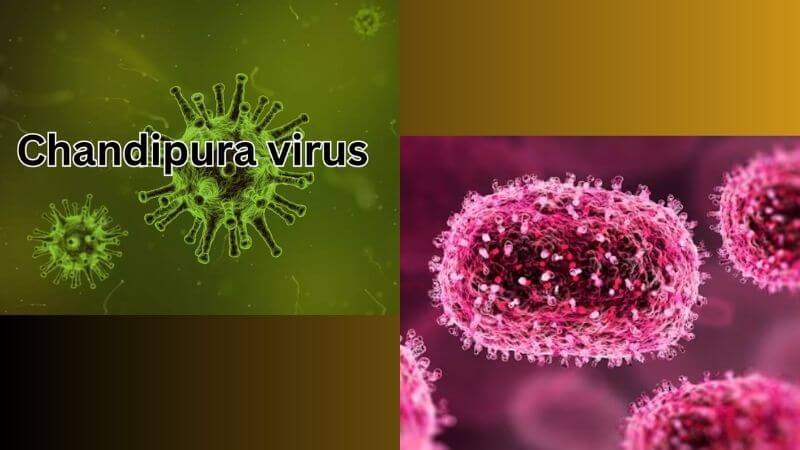In the vast landscape of viral infections, Chandipura virus (CHPV) stands out as a relatively lesser-known but significant pathogen. First identified in 1965 in Chandipura village in Maharashtra, India, this virus has since been recognized as a cause of acute encephalitis, primarily in children.
Over the years, Chandipura virus has sparked concern among public health officials due to its sporadic outbreaks and the severe nature of the disease it causes.
Origins and Discovery
Chandipura virus belongs to the family Rhabdoviridae, which also includes the rabies virus. It was first isolated from the blood of two patients during an outbreak of febrile illness in the Chandipura village.
Since then, CHPV has been identified in several states across India, with occasional reports of its presence in other countries.
The virus is transmitted through the bite of sandflies, particularly Phlebotomus species, which are prevalent in tropical and subtropical regions.
Although initially considered a regional concern, the potential for the virus to spread to other parts of the world, coupled with its high fatality rate, has made it a subject of international interest. Source
Symptoms and Clinical Manifestations
Chandipura virus primarily affects children under 15 years of age, with symptoms resembling those of other viral infections, such as influenza or dengue.
The disease often begins with a sudden onset of fever, accompanied by headaches, vomiting, and body aches. However, unlike common viral fevers, CHPV can quickly progress to severe neurological symptoms, including:
- Encephalitis: Inflammation of the brain, leading to seizures, confusion, and unconsciousness.
- Altered Mental Status: Patients may experience irritability, agitation, or lethargy.
- Coma: In severe cases, the virus can induce a coma, often leading to death within 24 to 48 hours after the onset of symptoms.
The rapid progression of the disease, coupled with its high mortality rate (ranging from 50% to 75%), makes early detection and treatment critical. Unfortunately, due to the rarity of the virus and the nonspecific nature of its initial symptoms, diagnosis is often delayed, leading to poor outcomes. Source
Transmission and Epidemiology
The Chandipura virus is primarily transmitted through the bite of infected sandflies. These insects thrive in warm, humid environments, making the virus more prevalent in rural and semi-urban areas of India during the monsoon season.
Although the virus has been detected in other vectors, such as mosquitoes, sandflies remain the primary mode of transmission.
Human-to-human transmission of CHPV is not documented, which helps to contain its spread.
However, the virus’s ability to cause outbreaks, particularly in areas with inadequate healthcare infrastructure, remains a significant public health concern.
Over the years, several outbreaks of CHPV have been reported, with the most notable ones occurring in India in 2003 and 2004. These outbreaks predominantly affected children, leading to numerous deaths and highlighting the need for increased awareness and surveillance.
Diagnosis and Treatment
Diagnosis of Chandipura virus infection is challenging due to its nonspecific symptoms and the lack of widespread awareness among healthcare providers.
There is currently no specific antiviral treatment for CHPV. Management of the disease is primarily supportive, focusing on reducing symptoms and preventing complications. This may include:
- Fever Management: Using antipyretics to reduce fever.
- Hydration: Ensuring adequate fluid intake to prevent dehydration.
- Seizure Control: Administering anticonvulsants to manage seizures.
- Critical Care: In severe cases, patients may require intensive care support, including mechanical ventilation.
Given the rapid progression and high fatality rate of CHPV, early recognition and prompt supportive care are essential to improving outcomes.
Prevention and Control
Preventing Chandipura virus infection largely depends on controlling the sandfly population and minimizing human exposure to these vectors. Public health measures that can help include:
- Insecticide Spraying: Regular spraying of insecticides in areas prone to sandfly infestation.
- Use of Insect Repellents: Encouraging the use of repellents, particularly during the monsoon season.
- Protective Clothing: Wearing long sleeves and pants to reduce skin exposure to sandfly bites.
- Environmental Management: Reducing sandfly breeding sites by managing waste and maintaining cleanliness in residential areas.
Public health campaigns to raise awareness about the virus, particularly in endemic areas, are crucial in preventing outbreaks. Additionally, ongoing research into the development of vaccines and antiviral therapies offers hope for more effective prevention and treatment options in the future.
Summary
Chandipura virus, though not as widely recognized as other viral infections, poses a significant threat, particularly to children in certain regions.
Its rapid onset, severe neurological complications, and high fatality rate make it a critical public health concern. As research continues, there is hope that more targeted treatments and preventive measures will emerge, helping to mitigate the impact of Chandipura virus on vulnerable populations.
Also Read: Sleepover Party Favors – Some Fun And Easy Ideas!
Tinydale is on YouTube, Click here to subscribe for the latest videos and updates.
Follow Us: Facebook | Instagram | Twitter | Youtube | Pinterest

